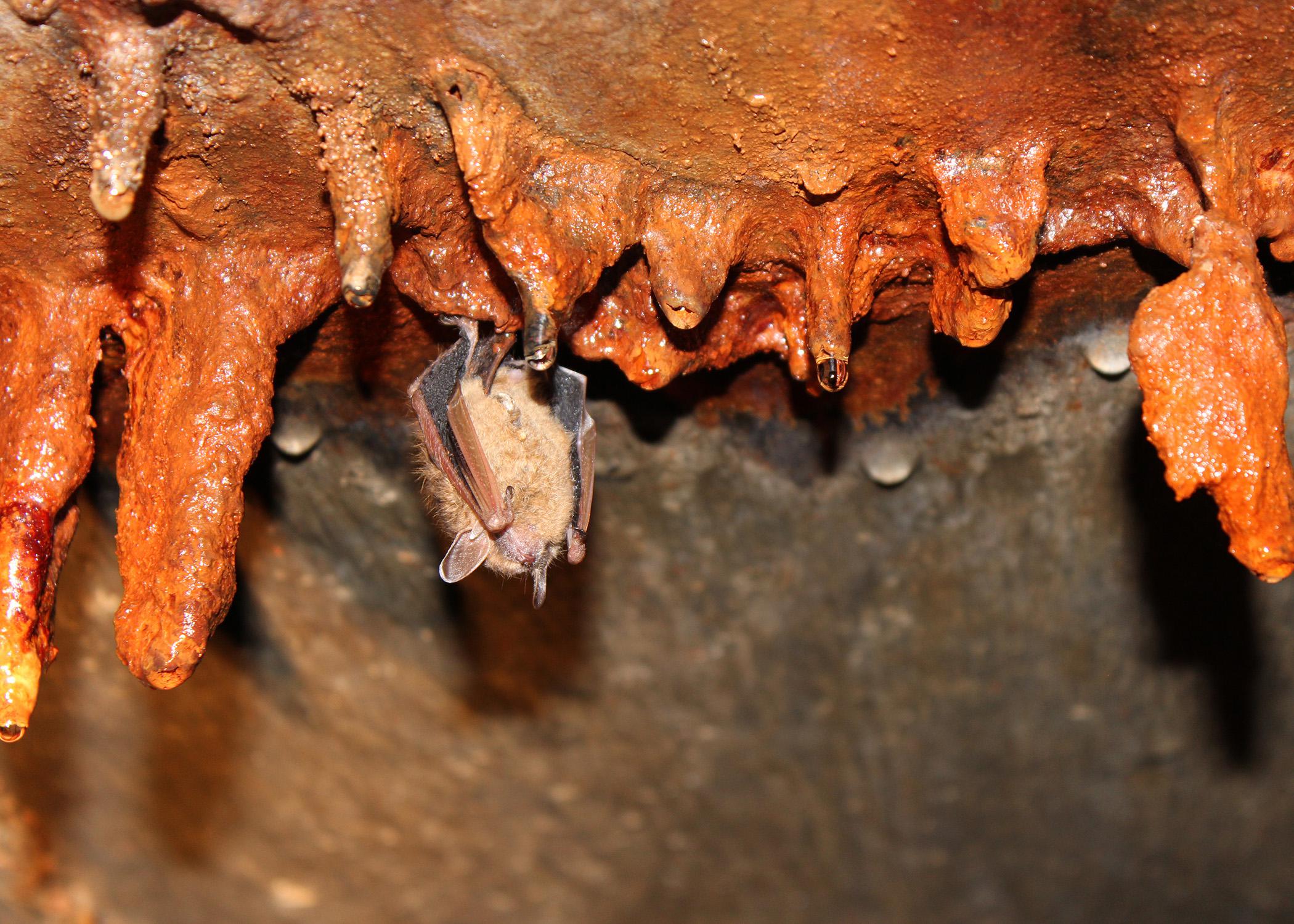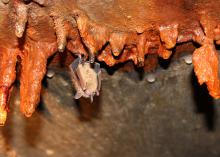Information Possibly Outdated
The information presented on this page was originally released on October 3, 2013. It may not be outdated, but please search our site for more current information. If you plan to quote or reference this information in a publication, please check with the Extension specialist or author before proceeding.
Late summer, early fall is time for bat exclusion
MISSISSIPPI STATE -- As summer ends and fall begins, homeowners who don’t want host neighbors from the natural world should begin preparing their houses for cooler weather.
Most people think of certain insects and mice as the critters looking for a cozy spot to spend the winter. But as natural habitats decline, bats are also looking for suitable homes.
Bats are nocturnal and prefer to roost in dark places during the day. While they like caves and big, hollow trees, those natural roosts can be hard to find.
“Bats like a really nice attic or a dark old house or barn, and in winter, they are looking for more climate-stable conditions because of the temperature shifts,” said Jeanne Jones, wildlife biologist and professor at Mississippi State University’s Forest and Wildlife Research Center. “Winter is a time they may choose to come in cracks, a gable end, or a vent in a house, because a well-insulated roof keeps the temperature stable.
“If conditions are optimal in roost sites, female bats may even return to these highly suitable roosts to bear young the following spring and early summer,” she said.
Unlike mice, which are known to use their sharp teeth to chew through wood or other building materials, bats use their teeth only for eating insects. But they are small enough to enter homes through tiny holes -- they need just a half inch to wiggle inside.
“Homeowners should check common entry points such as open windows or doors, broken or poorly fitted screens, open soffits, loose or missing roof shingles, loose flashing or boards, and openings for pipes or wiring,” Jones said. “Places where different parts of the house join, such as where the walls meet the eaves at the gable ends of an attic, where porches attach to a house or where dormers meet the roof, can separate enough for bats to enter. Siding can also be problematic, especially where it meets doors, windows or chimneys.”
Jones said there are a variety of resources for homeowners to safely exclude bats from houses and buildings but cautioned against excluding during the spring and summer. That is when pregnant females are searching for places to have their young.
“Exclude before breeding season starts,” she said. “If you exclude mother bats, you’ll end up with dead babies in the attic. Fall and winter are ideal times to install exclusion devices so you don’t impact the young bats.”
Marina Denny, a natural resources Extension associate at MSU, cautioned that removing bats from a home or building requires patience.
“Generally bats are not aggressive, but people often fear them and want to get them out of buildings quickly,” Denny said. “Using pesticides is illegal, and some of the methods promoted to repel bats, such as mothballs or ultrasonic devices, are not effective. Exclusion is the best way to remove bats from a building.”
If bats are in an attic or other space not considered living quarters, the first step in the exclusion process is to close up all potential entry points that would allow bats to get into living quarters. The next step is to install a one-way device at each exit point. These devices allow bats to leave but prevent them from getting back in.
Denny explained that exclusion devices are simple and can be constructed with netting, window screen, funnels or a smooth tube, such as piece of PVC pipe fitted with a one-way flapper valve or piece of plastic sheeting to keep the bats from returning.
The type of material used depends on the situation, architecture and number of bats involved.
“Bats can’t get a grip on the smooth surface of the pipe, which is one of the reasons they work so well,” she said. “Bat Conservation International has diagrams and instructions for building your own exclusion devices, and there are commercially made devices you can purchase.
“If you’re inclined to keep the bats nearby, but just not inside your house, consider building a backyard bat house for these critters to use as alternative living quarters,” Denny said.
Leave exclusion devices on the home or building for several days to allow all of the bats to escape. Once the bats are gone, seal up all the entry points.
For more information, visit http://batcon.org.




